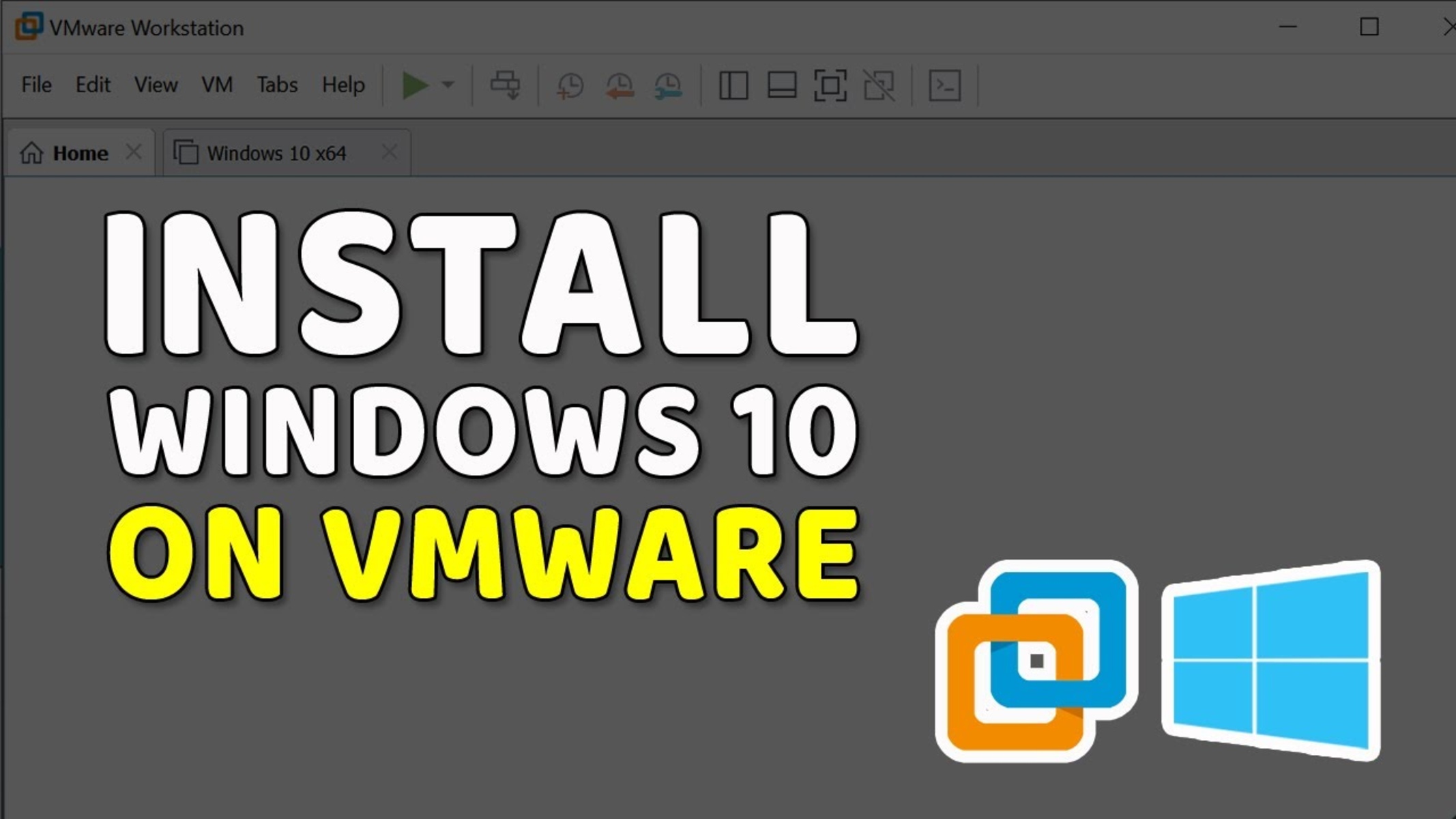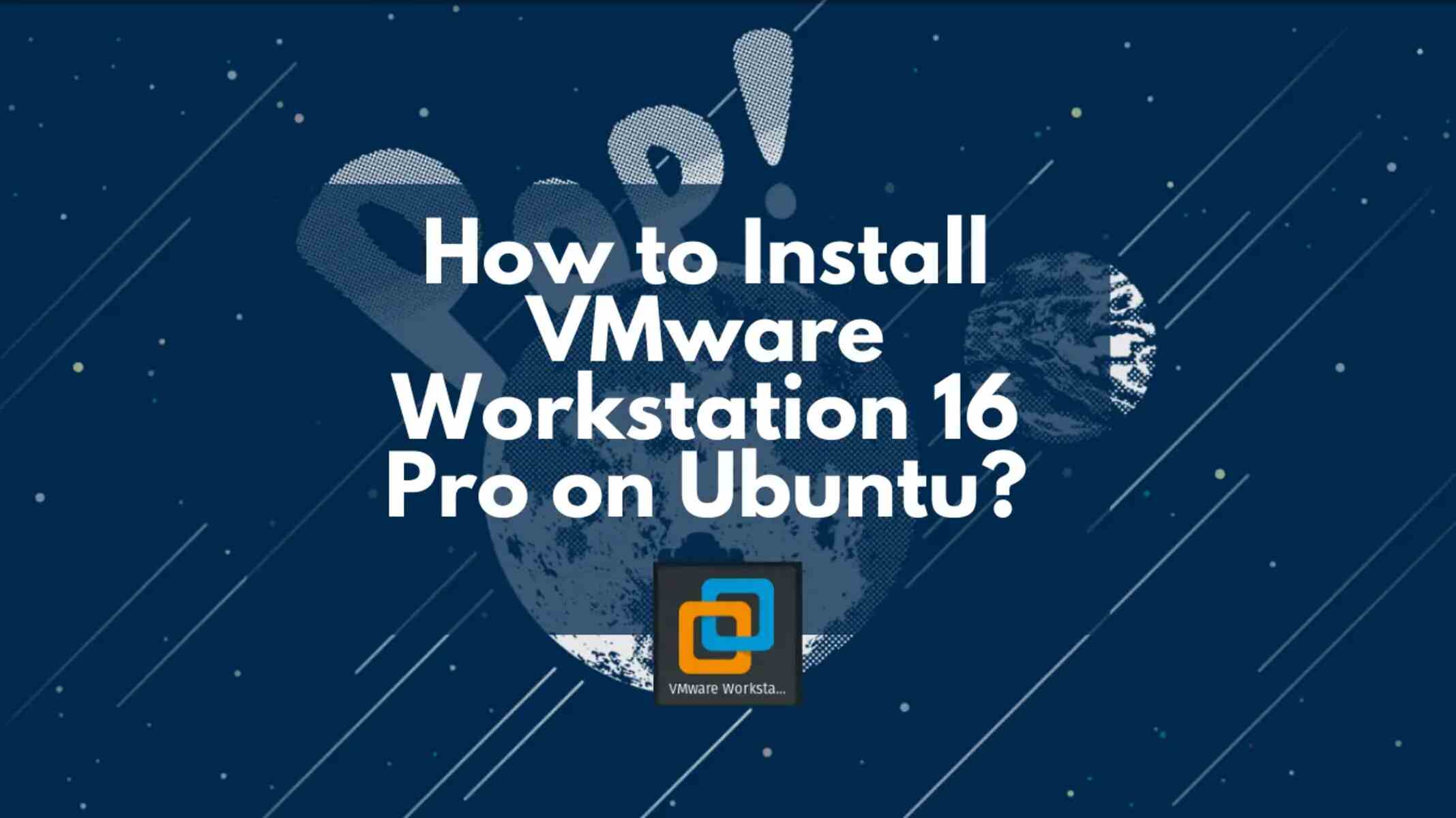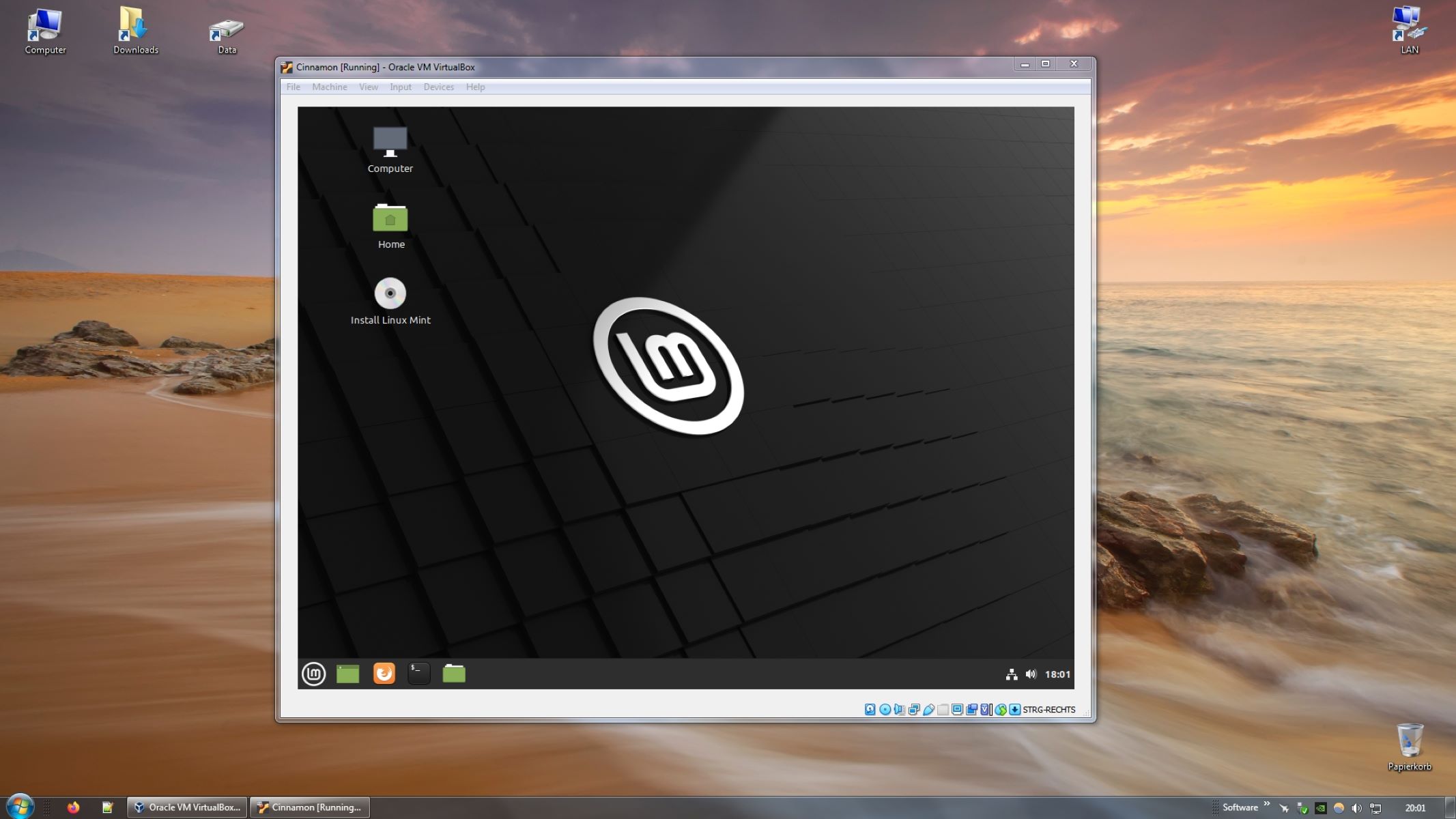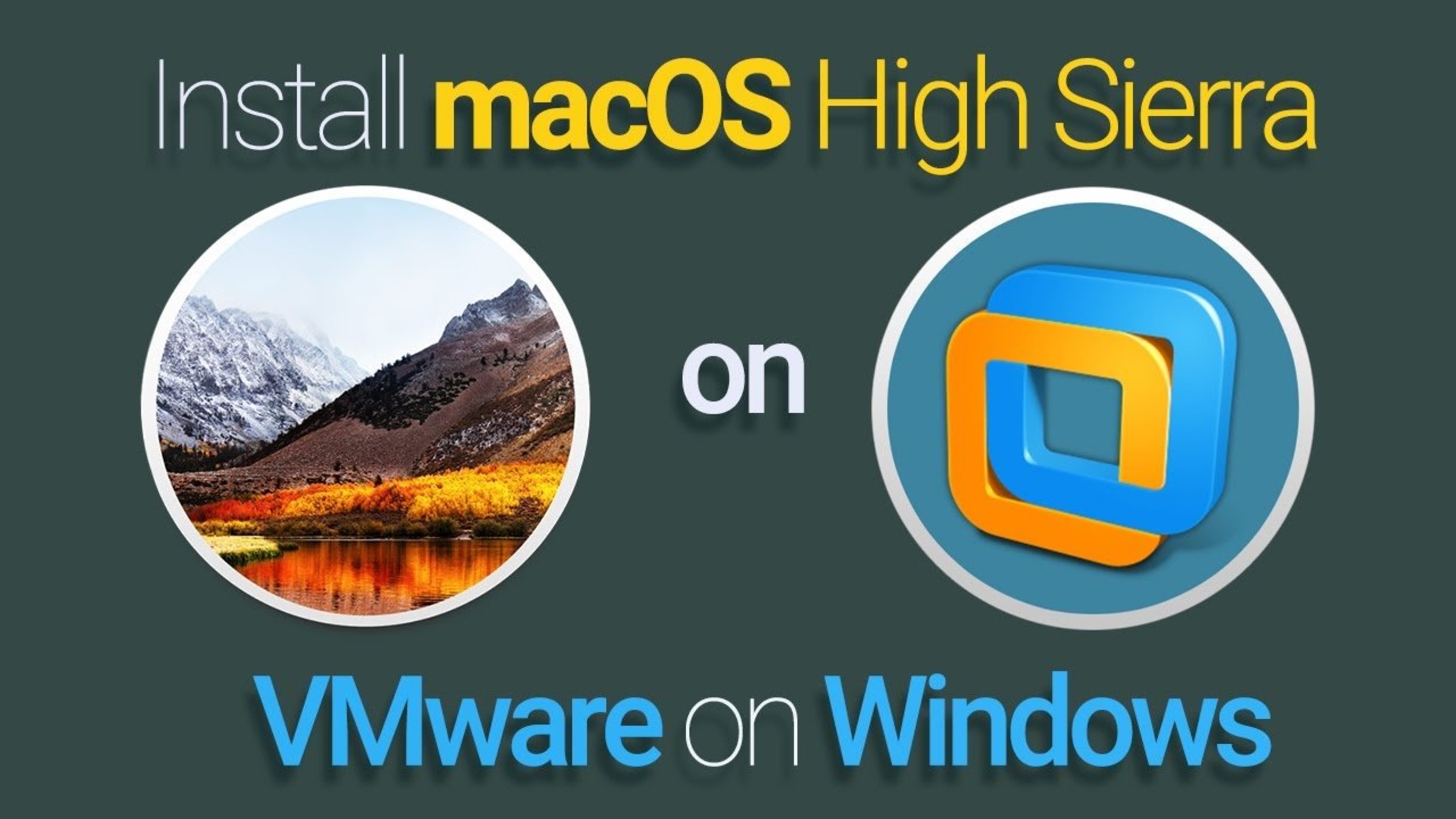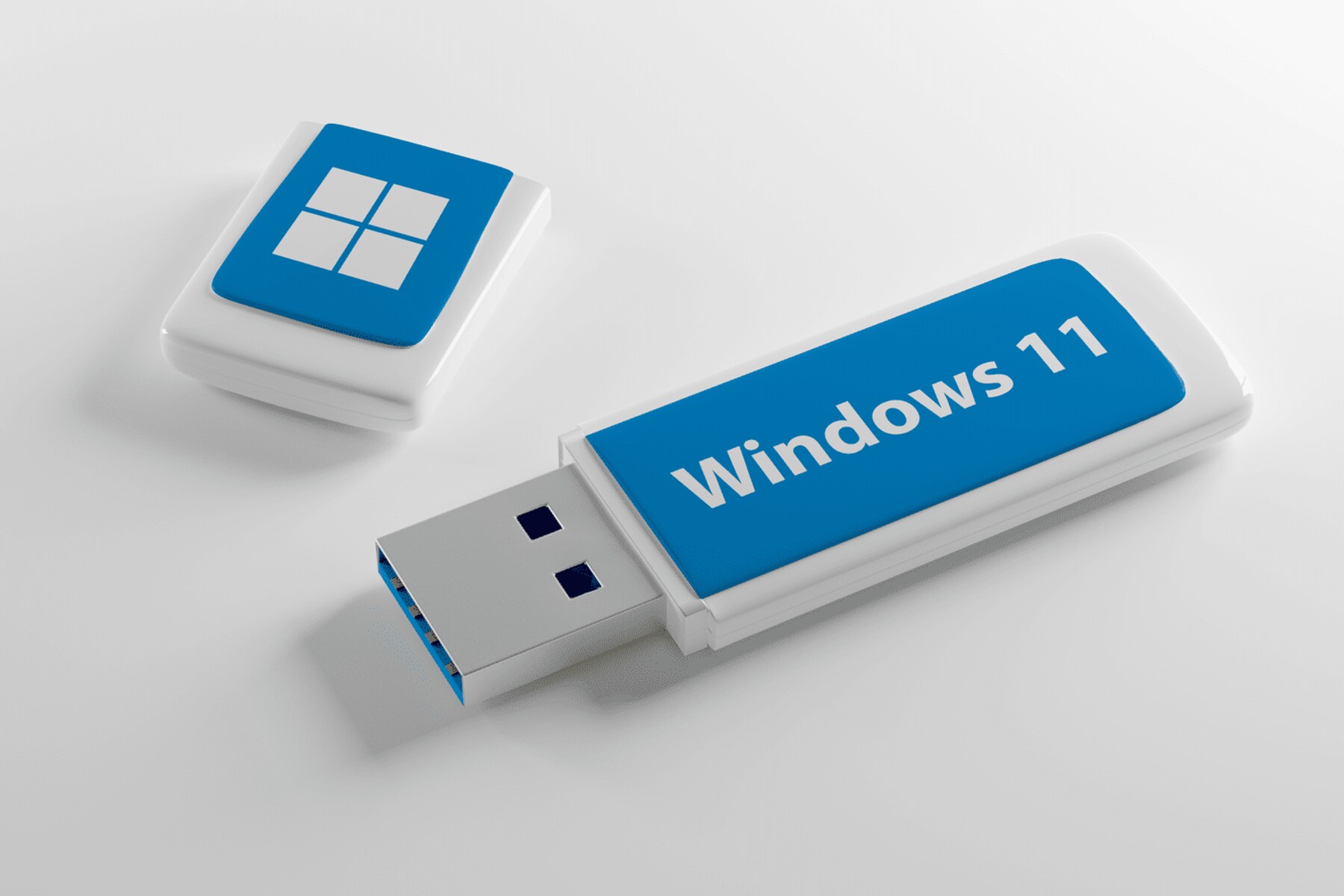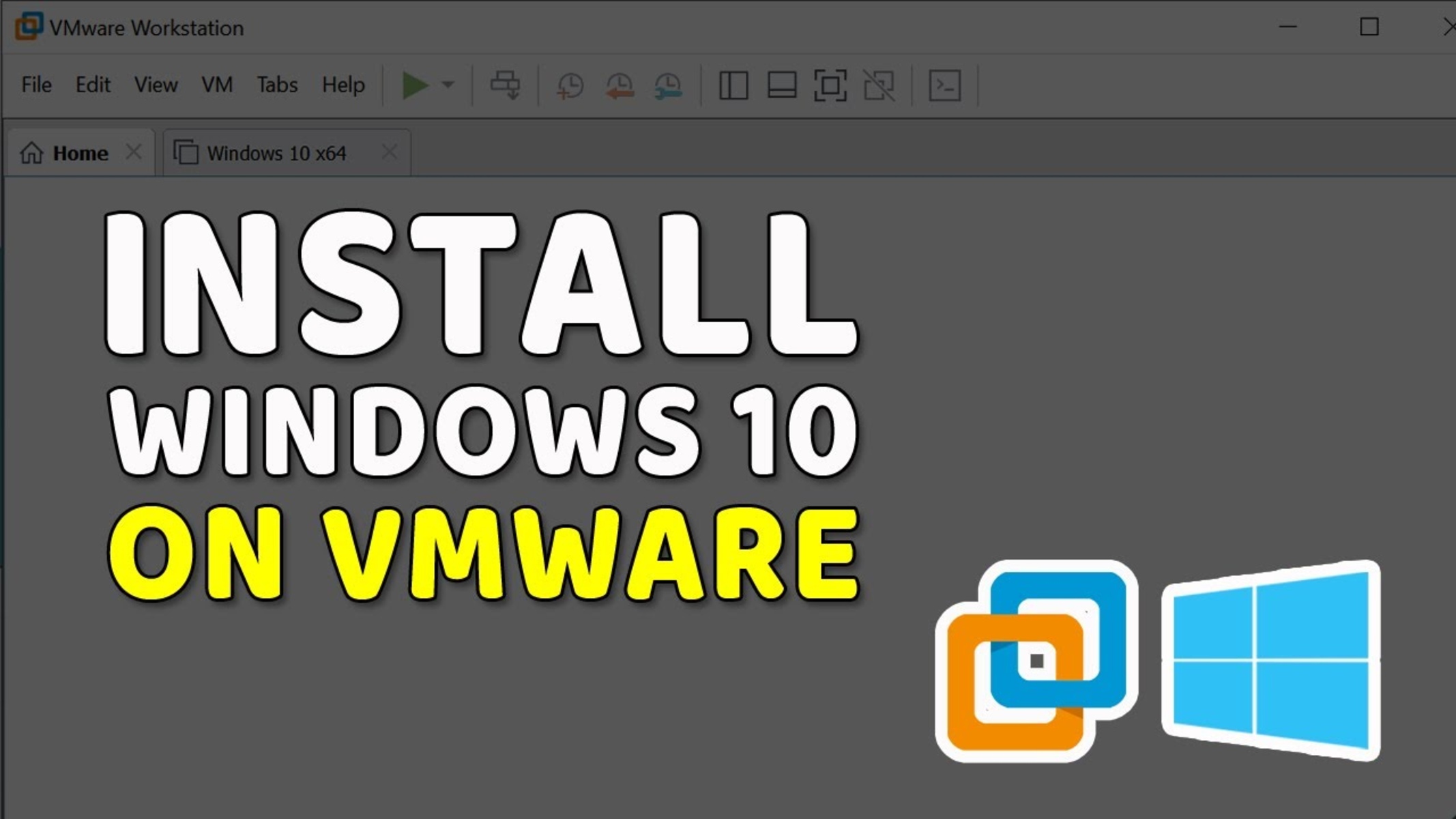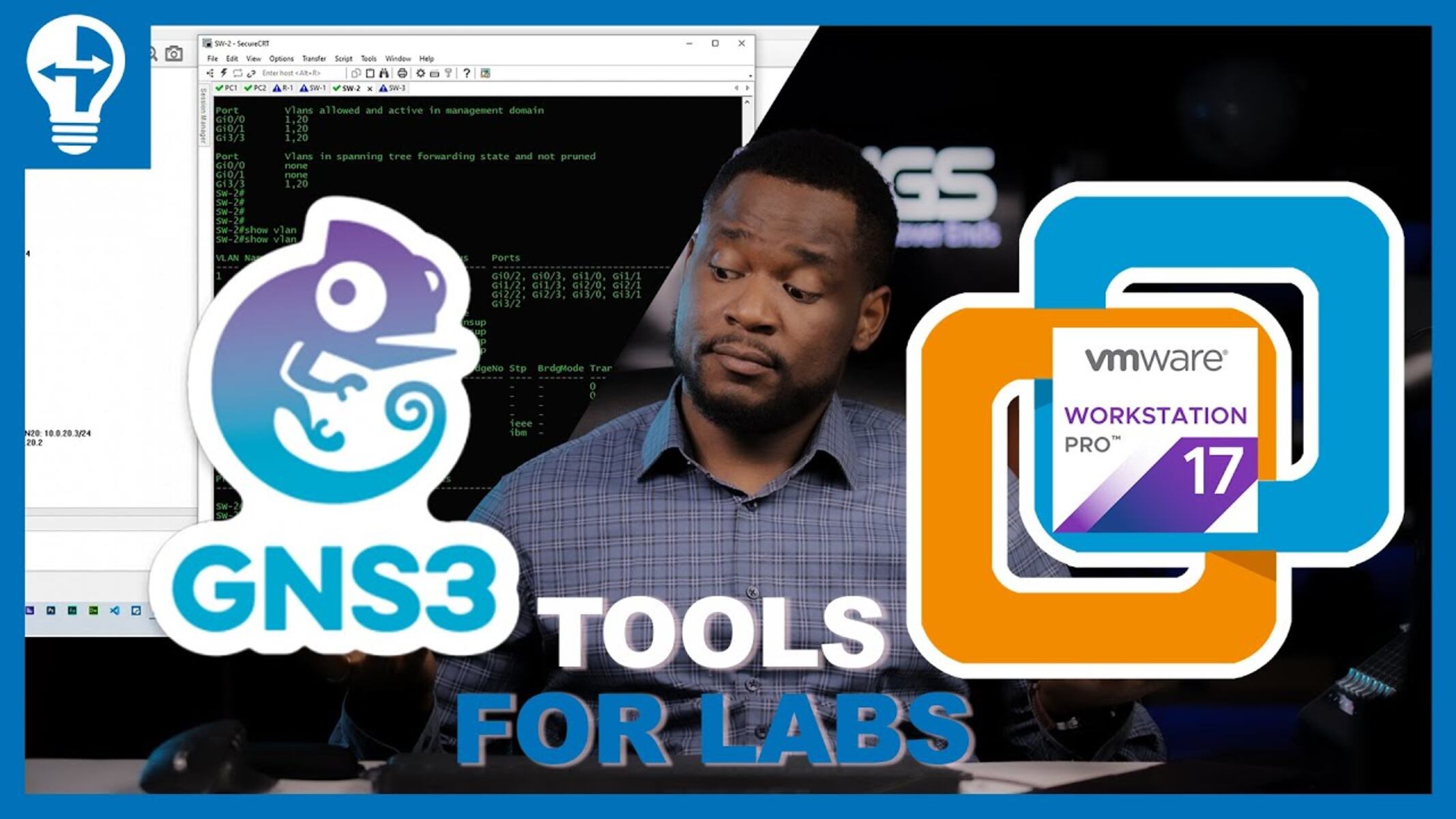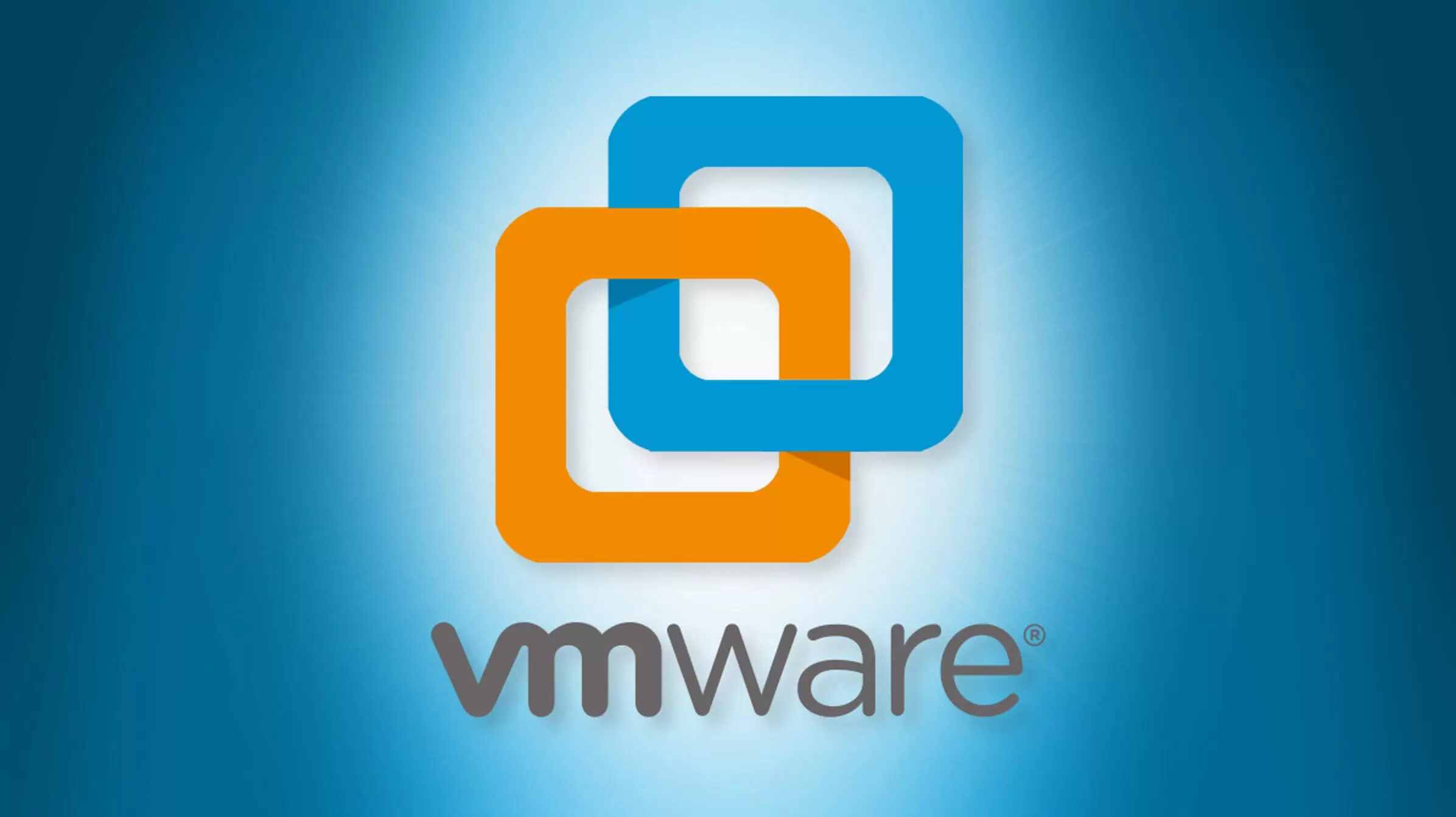Introduction
Welcome to our guide on how to install VMware Workstation Player after updating to Windows 10. VMware Workstation Player is a powerful virtualization tool that allows you to run multiple operating systems on a single computer, making it ideal for developers, IT professionals, and enthusiasts alike. After updating your Windows 10 operating system, it may be necessary to reinstall VMware Workstation Player to ensure seamless functionality.
Updating your operating system can often result in the need to reinstall certain programs, including virtualization software like VMware Workstation Player. Whether you have recently upgraded to a new version of Windows 10 or performed a major update, this guide will walk you through the installation process step by step.
By following the instructions laid out in this guide, you will be able to successfully install VMware Workstation Player on your updated Windows 10 system and continue running virtual machines with ease. Before we begin, make sure you have downloaded the latest version of VMware Workstation Player from the official VMware website.
Now, let’s dive into the step-by-step process of installing VMware Workstation Player after a Windows 10 update.
Step 1: Download the VMware Workstation Player Installer
The first step in installing VMware Workstation Player after a Windows 10 update is to download the installer from the official VMware website. Follow these simple instructions to ensure a successful download:
- Open your preferred web browser and navigate to the official VMware website.
- Go to the Downloads section and locate the VMware Workstation Player product.
- Click on the Download button to initiate the download process.
- Choose the appropriate version of VMware Workstation Player for your operating system. Make sure to select the version that matches the architecture of your system (32-bit or 64-bit).
- Once the download is complete, locate the downloaded file on your computer. The file should have the extension “.exe” for Windows.
- At this point, you have successfully downloaded the VMware Workstation Player installer and are ready to proceed to the next step of the installation process.
Downloading the VMware Workstation Player installer directly from the official website ensures that you have the latest and most secure version of the software. It is important to download the correct version that matches your system’s architecture to avoid compatibility issues during installation.
In the next step, we will guide you on how to run the VMware Workstation Player installer and initiate the installation process on your Windows 10 system.
Step 2: Run the Installer
Now that you have successfully downloaded the VMware Workstation Player installer, it’s time to run the installer and begin the installation process. Follow these steps to run the installer:
- Locate the downloaded VMware Workstation Player installer file on your computer. The file should have the extension “.exe” for Windows.
- Double-click on the installer file to run it.
- If prompted, grant permission to the installer to make changes to your system by clicking on “Yes” or entering your administrator credentials.
- The VMware Workstation Player installation wizard will now launch.
By running the installer, you are initiating the installation process for VMware Workstation Player on your Windows 10 system. It is important to ensure that you have the necessary permissions and privileges to run the installer, especially if you are accessing the installer from an administrator account.
In the next step, we will guide you on how to navigate through the VMware Workstation Player installation wizard and accept the license agreement to continue with the installation process.
Step 3: Accept the License Agreement
Once you have launched the VMware Workstation Player installation wizard, the next step is to accept the license agreement. Follow these simple instructions to proceed:
- Read through the license agreement presented on the screen carefully.
- Tick the checkbox indicating that you accept the terms of the license agreement.
- Click on the “Next” or “Continue” button to proceed to the next step.
It is essential to review the license agreement before accepting it. Make sure you understand the terms provided by VMware for using their Workstation Player software. Failure to comply with the terms may result in violation of the license agreement and potential legal consequences.
By accepting the license agreement, you are giving VMware permission to install and run VMware Workstation Player on your Windows 10 system. Without accepting the license agreement, you will not be able to continue with the installation process.
In the next step, we will guide you on how to choose the installation location for VMware Workstation Player on your Windows 10 system.
Step 4: Choose the Installation Location
After accepting the license agreement, the next step is to choose the installation location for VMware Workstation Player on your Windows 10 system. Follow these steps to select the installation location:
- The VMware Workstation Player installation wizard will display the default installation location. If you wish to change the location, click on the “Browse” button.
- Navigate to the desired location on your computer where you want to install VMware Workstation Player.
- Click on the “Next” or “Continue” button to proceed to the next step.
Choosing the installation location allows you to determine where VMware Workstation Player will be installed on your Windows 10 system. By default, the installer selects an appropriate location, but you can change it to a different folder or directory if desired.
It is important to ensure that the chosen installation location has sufficient disk space available and is accessible by the user account you are currently using on your Windows 10 system.
In the next step, we will guide you on how to customize the installation of VMware Workstation Player, including selecting optional additional features.
Step 5: Customize the Installation (Optional)
Once you have chosen the installation location, you have the option to customize the installation of VMware Workstation Player on your Windows 10 system. Follow these steps to customize the installation:
- The VMware Workstation Player installation wizard allows you to select optional features to install along with the core software.
- On the customization screen, you may see checkboxes for additional features such as shortcuts, VMware tools, or other components.
- Select or deselect the optional features according to your preferences.
- Review the summary of your selections and proceed to the next step.
Customizing the installation of VMware Workstation Player allows you to control which additional features are installed alongside the core software. It gives you the flexibility to choose only the features that are relevant to your needs, helping to optimize disk space and streamline the installation process.
Take the time to carefully review the optional features listed in the customization screen. Ensure that you select the features that are necessary for your specific requirements.
In the next step, we will guide you on how to configure user experience settings, such as creating desktop shortcuts or specifying file type associations, during the installation of VMware Workstation Player on your Windows 10 system.
Step 6: Configure User Experience Settings (Optional)
During the installation of VMware Workstation Player on your Windows 10 system, you have the option to configure user experience settings. These settings allow you to customize certain aspects of how VMware Workstation Player interacts with your system. Follow these steps to configure user experience settings:
- On the user experience settings screen of the installation wizard, you may see options such as creating desktop shortcuts, enabling product updates, or specifying file type associations.
- Select or deselect the checkboxes next to the options according to your preferences.
- Click on the “Next” or “Continue” button to proceed to the next step.
Configuring user experience settings provides you with the flexibility to personalize your VMware Workstation Player installation. You can choose to create desktop shortcuts for easy access, enable automatic updates to keep the software up to date, or define specific file types that VMware Workstation Player will handle by default.
Consider your workflow and preferences when making selections on the user experience settings screen. Choose the options that will enhance your experience with VMware Workstation Player and align with how you use virtualization on your Windows 10 system.
In the next step, we will guide you on how to complete the installation process and finalize the setup of VMware Workstation Player on your Windows 10 system.
Step 7: Complete the Installation
After configuring the user experience settings, you are now ready to complete the installation of VMware Workstation Player on your Windows 10 system. Follow these steps to finish the installation process:
- Review the summary of your selected options and settings on the installation summary screen.
- Click on the “Install” or “Finish” button to start the installation process.
- The installer will begin installing VMware Workstation Player on your Windows 10 system.
- Wait for the installation to complete. The progress will be displayed on the screen.
- Once the installation is finished, you will see a confirmation message indicating the successful installation of VMware Workstation Player.
Completing the installation process ensures that all the necessary files and components of VMware Workstation Player are properly installed on your Windows 10 system. It is important to wait for the installation to finish before proceeding.
Make sure to review the confirmation message to ensure that VMware Workstation Player was installed successfully without any errors or issues. In case of any errors or failures, consult the VMware documentation or support for troubleshooting.
In the next step, we will guide you on how to launch VMware Workstation Player and get started with using virtual machines on your Windows 10 system.
Step 8: Launch VMware Workstation Player
Once the installation of VMware Workstation Player is complete, it’s time to launch the software and start using virtual machines on your Windows 10 system. Follow these steps to launch VMware Workstation Player:
- Locate the VMware Workstation Player icon on your desktop or in the Start menu.
- Double-click on the icon to open VMware Workstation Player.
- The VMware Workstation Player application will launch, and you will be greeted with the main interface.
Launching VMware Workstation Player enables you to create, manage, and run virtual machines on your Windows 10 system. It provides a user-friendly interface where you can seamlessly switch between different virtual machines, configure settings, and perform various tasks related to virtualization.
Ensure that you have administrative privileges or the necessary permissions to launch VMware Workstation Player, particularly if you are accessing it from a restricted user account. If prompted, provide the required credentials to initiate the software.
Congratulations! You have successfully installed VMware Workstation Player after updating to Windows 10 and launched the software on your system. You are now ready to create and run virtual machines for testing, development, or any other purpose you require.
In this guide, we have walked you through the step-by-step process of installing VMware Workstation Player after a Windows 10 update. By following these instructions, you can ensure a smooth installation and setup experience on your Windows 10 system.
Enjoy utilizing the power of virtualization with VMware Workstation Player and explore the numerous possibilities it offers for running multiple operating systems simultaneously.
Conclusion
In this guide, we have provided step-by-step instructions on how to install VMware Workstation Player after updating to Windows 10. By following these steps, you can easily reinstall VMware Workstation Player to ensure seamless functionality on your updated Windows 10 system.
We started by highlighting the importance of downloading the VMware Workstation Player installer from the official VMware website to ensure you have access to the latest and most secure version of the software. Then, we walked you through the process of running the installer, accepting the license agreement, choosing the installation location, and customizing the installation according to your preferences.
We also covered the configuration of user experience settings and the completion of the installation process. Finally, we guided you on how to launch VMware Workstation Player and start using virtual machines on your Windows 10 system.
With VMware Workstation Player installed, you can now leverage the power of virtualization to run multiple operating systems on a single computer. Whether you’re a developer, IT professional, or simply an enthusiast, this software provides a convenient and efficient way to test software, simulate network environments, and perform various tasks on different operating systems.
Remember to always download the correct version of VMware Workstation Player that matches your system’s architecture and to carefully review and understand the license agreement before accepting it.
We hope that this guide has been helpful in guiding you through the installation process of VMware Workstation Player after updating to Windows 10. Enjoy exploring the world of virtualization and making the most out of this powerful software!







